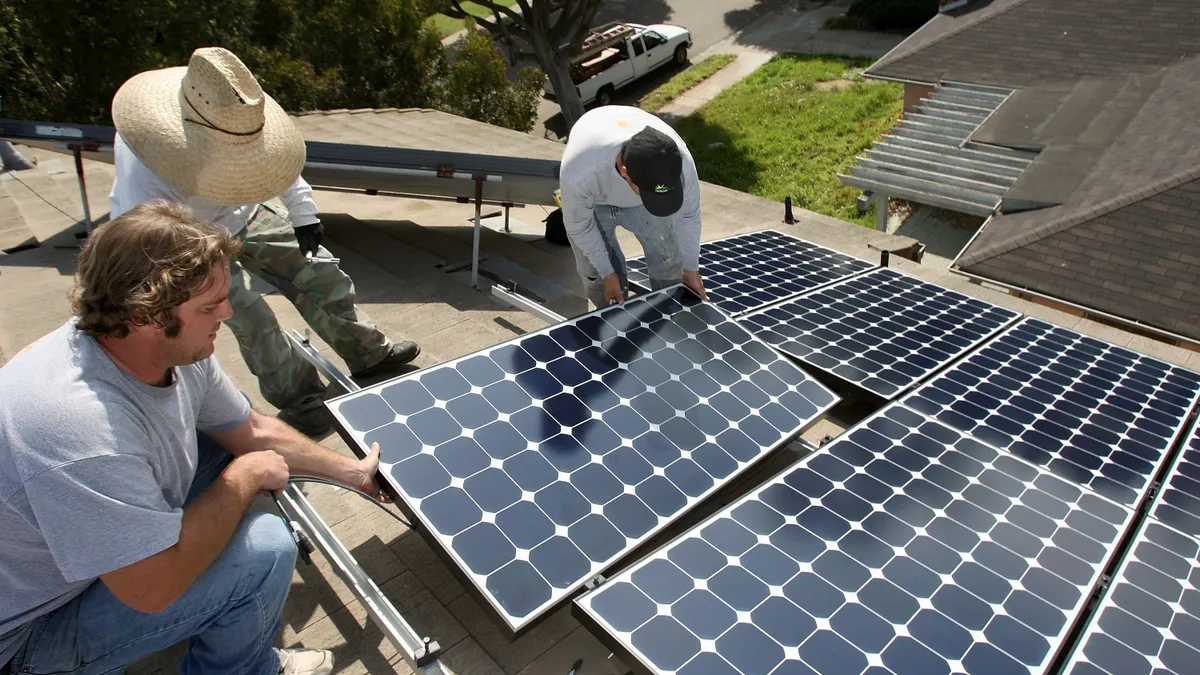Dive Brief:
- Second-quarter prices for utility-scale solar have increased 6% year-over-year, according to a U.S. Solar Market Insight report released Tuesday by Wood Mackenzie and the Solar Energy Industries Association (SEIA).
- Supply chain constraints, increased shipping costs and rising prices for key commodities such as steel appear to be the primary drivers of rising prices, according to Michelle Davis, a principal analyst at Wood Mackenzie Power & Renewables and the lead author of the report.
- Prices will likely remain elevated through the remainder of 2021, Davis said, but should return to their decade-long downward trend sometime in 2022.
Dive Insight:
Solar installers are still feeling the effects of COVID-19 nearly a year after the industry appeared to emerge from global shutdowns unscathed, the latest U.S. Solar Market Insight report suggests.
Several months of rising prices for commodities, shipping and other necessities forced solar developers across all segments of the industry to increase their own prices in the second quarter of 2021, with utility-scale solar costs increasing 6% year-over-year, according to Wood Mackenzie. Although constrained supplies have not led to project cancellations, Davis said, developers have been forced to either delay projects or renegotiate outstanding contracts to complete installations this year.
"What's happening today is, developers are fighting very hard right now to not lose money on their projects," Davis said.
Smaller companies have been especially hard hit, according to SEIA President and CEO Abigail Ross Hopper.
"While most companies have enough inventory to prevent price increases from impacting projects this year, smaller companies and others with less inventory are feeling the impacts now and are tightening their belts," she said in a statement. "If prices remain high or increase, these effects will be felt by most in the industry by early 2022."
After that, Davis said, prices should begin to return to pre-COVID norms as commodities production and shipping stabilize. It's unlikely, she said, that any course of action or policy could help accelerate this process and bring prices down sooner. However, she said that the extension of existing tariffs, or the imposition of new expenses, could jeopardize the currently anticipated recovery, and SEIA noted in a press release accompanying the report that two new tariff petitions have been filed.
"New trade restrictions could exacerbate price increases and impede solar development in the U.S.," Ross Hopper said. "The last thing we should be doing is implementing policies that raise costs, such as tariffs."
To achieve DOE's recently-announced goal of significantly increasing solar deployments, Davis said, is going to require thinking about global supply chain issues in a systemic fashion.
"Having domestic supply chains is important, but we also need to make sure developers have as many options as possible, which depends on what trade policy looks like," she said. "To reach those targets, we're going to need all of it."













